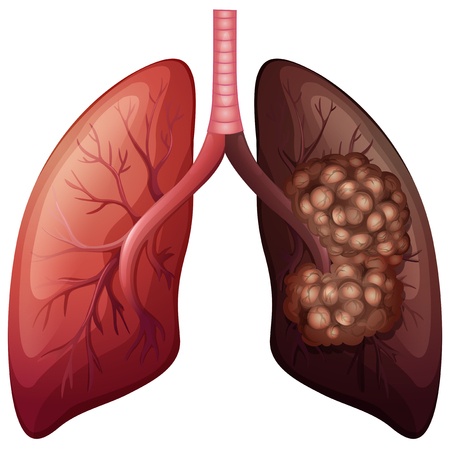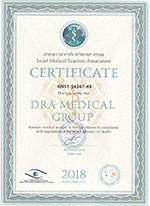Overview
Lung cancer is the type of cancer that develops in the lungs, when the cells that constitute this organ divide and grow excessively. Lung cancer can affect one or both lungs and usually starts in the cells that line the air passages. Consequently, tumors that are high in size may compromise the diffusion of oxygen into the bloodstream and the removal of carbon dioxide from the body.
Lung cancers can be of many types. If it remains in one place and does not spread, it is said to be benign. If it metastasizes and spreads to other parts of the body, it is said to be malignant. Depending on its origin, lung cancer can also be classified as primary (if it has its origin in the lung) or secondary (if it begins somewhere else and reaches the lung via the bloodstream or the lymphatic system). According to the cells affected by the condition, the two main types of lung cancer are distinguished: small-cell lung carcinoma and non-small-cell lung carcinoma.
Lung cancer is the main condition responsible for the cancer-related deaths, accounting for 13% of deaths attributable to all cancers worldwide.
Symptoms
Usually, lung cancer does not present with symptoms in its earlier stages. As the disease goes unnoticed and progresses, certain signs and symptoms develop:- Persistent coughing
- Shortness of breath
- Coughing up blood
- Persistent chest pain
- Wheezing and hoarseness
- Weight loss and/or loss of appetite
- Unexplained fatigue
- Recurring respiratory infections, such as pneumonia and bronchitis
- Bone pain
- Fever
- Difficulty swallowing

Risk factors
Similarly to other types of cancer, lung cancer results from damages to the genetic material contained in the cells. The risk of these damages occurring increases for a variety of reasons:• Smoking: cigarettes have numerous cancer-causing substances (carcinogens) in their composition. Carcinogens induce changes in the cells that line the lungs from as early as the moment an individual starts smoking. Smoking is actually the main cause of lung cancer around the globe; this includes second-hand smoking.
- Radon gas, resulting from the radioactive decay of uranium, which can still be found in construction materials and in the soil.
- Exposure to asbestos and other chemical substances, such as arsenic, chromium and nickel
- Family history of lung cancer
- Excessive alcohol consumption
- Other smoking-related lung pathologies, like emphysema

Diagnosis
If, on the basis of the patient’s reported symptoms, the doctor suspects lung cancer, a chest X-ray is the first test to be ordered. This will be complemented by a physical examination, a chest examination and an analysis of the blood found in the patient’s cough. Upon the identification of mass and/or other abnormalities in the lung, a CT scan will be used to obtain more information about the type and extent of the tumor. The definitive diagnosis is made by performing bronchoscopy or CT-guided biopsy and collecting a sample of the tumor for analysis. Once the presence of cancer cells is confirmed, the oncologist will determine the stage of the disease and how far it has spread.
Treatment
The therapeutic approach for lung cancer will depend on the type and stage of the tumor and on the overall health state of the patient. Available treatments include:
- Surgery - if the cancer is diagnosed early and it is confined to a small area, the surgical removal of the tumor and a minimal portion of surrounding healthy tissues can potentially cure patients. If, however, the disease has spread, surgery will only have a palliative purpose. By removing some masses to open an airway, for example, the patient will feel more comfortable, but will not be cured.
- Chemotherapy - it can be used as a first line option or after the surgery. Chemical substances are administered intravenously or orally over a period of weeks or months in a cyclic fashion so that the patient can recover from the strong side effects
- Radiation therapy - this therapy uses high-energy rays and is useful as a main treatment or to kill remaining cells after surgery or to kill cells that have metastasized
- Targeted therapy - these treatments act on specific elements of the cancerous mass and their activity may lead to a reduction in the blood supply to the tumor or to the blocking of the chemicals that make cancer cells more prone to dividing and living longer.










